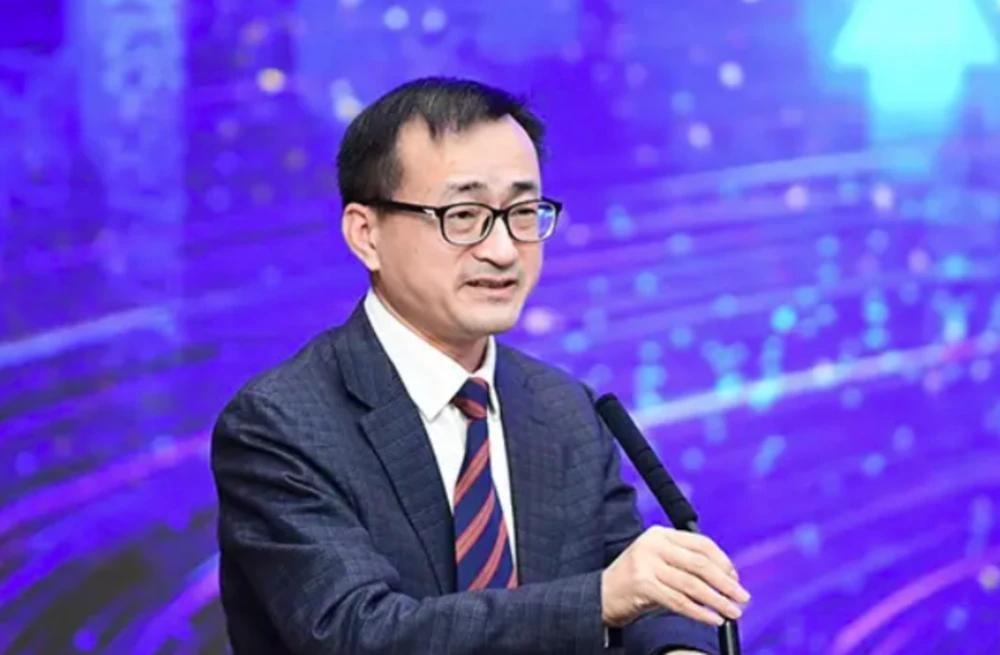Will “Made in America” back? To be at the Mercy of China.

Currently, the changes in the world economy are more complex than imagined. In addition to referring to the judgments of international institutions, it is important to delve into the events that are taking place to gain a deeper understanding of the trends in the world economy and China’s economic development.
In the post-pandemic era, the mid-term factors that dominate global economic growth will not change, but they may vary in different stages. In previous research on the long-term stagnation of global economic growth, we have identified many fundamental factors, such as the slowdown in global productivity leading to a deceleration of economic growth.
Currently, the growth rate of labor productivity in various countries is slowing down, and it has been accelerating downward in recent years. The main reasons for this are: firstly, the recovery in the post-pandemic period is slower than expected, and the scars left by the pandemic are significant. Secondly, the technology war initiated by the United States, “decoupling,” and the decline in global technology trade due to “de-risking” have directly led to a gradual slowdown in global technological progress, primarily reflected in the significant decrease in the trading volume of high-tech products such as global chips and semiconductors. Thirdly, the expansion rate of new technology application scenarios has slowed down, mainly manifested in the decline in global patent technologies.
These major factors have resulted in a slowdown in labor productivity growth driven by technological progress, leading to a decline in economic growth. In addition, some long-term factors such as population issues, the reconstruction of industrial and supply chains, deglobalization, the expansion of climate costs due to decarbonization, and the increase in defense spending costs due to rising geopolitical risks will also contribute to the slowdown in economic growth.
The global inflation rate reached a historic high of 9.2% in 2022. The comprehensive contraction of monetary policy and financial conditions by developed economies represented by the United States and the European Union directly led to an increase in global financing costs and a decline in investment, thereby curbing the rapidly rising inflation rate. Therefore, market forecasts suggest that the global inflation rate may fall back to around 5%.
The decline in the inflation rate is positive news for global economic growth and reducing the cost of living for low-income groups. However, considering that inflation still exhibits stickiness, it may take a considerable amount of time to return to target inflation levels in various countries. For example, some international institutions predict that it may take another year for the global inflation rate to return to pre-pandemic levels, indicating that the reversal of monetary policy may not be as fast as anticipated.
Although the Federal Reserve announced a complete halt to rate hikes in December of last year, and the European Union has begun discussing adjustments to interest rate policies, there is still significant uncertainty regarding whether interest rate levels will experience a significant rollback, triggering a reversal in global financial conditions and capital flows. However, it is clear that the world is currently in a new process of reducing inflation and high interest rates.
Despite some recovery in the global supply chain in 2022, leading to a certain degree of post-pandemic rebound, world trade is still in a contraction phase. I believe that achieving trade growth this year will be challenging.
The significance of the trade development in 2024 lies in the fact that it has been five years since the United States implemented adjustments such as reshoring manufacturing, “decoupling,” and “de-risking” as part of its global strategy. During this process, a transitional state will emerge, where, under the influence of nearshore outsourcing and friendly offshore outsourcing, there will be an increase in demand for fixed asset investment and energy.
In recent years, trade between China and Mexico, the main base for nearshore outsourcing by the United States, has grown rapidly. Trade with the regions where the United States is deploying friendly offshore outsourcing, especially Southeast Asia, has also seen significant growth. These improvements may be the result of trade policy adjustments, but to a larger extent, they are due to the “demand pull” brought about by the U.S. policy realignment, especially in terms of mechanical and electrical products and new energy products. After the completion of the strategic phase in the United States, these demands may change.
Currently, Mexico has established preliminary production lines to provide industrial products to the United States. We need to consider what changes will occur in the global trade pattern when similar production lines are established in Southeast Asia and the United States becomes a production base for core products. I believe that despite the impact of the pandemic, the United States’ strategy will show phased results after five years, and we need to make a thorough assessment of this.
Issues of concern include whether the United States will experience a reindustrialization and a comprehensive return of critical supply chains and industrial chains in the high-tech field, and whether it can achieve commercialization successfully with policy support. On a global scale, whether the nearshore and friendly offshore outsourcing conducted by the United States has the potential for commercialization and sustained development is also worth attention.
The subsidy effects brought about by the U.S. Infrastructure Investment and Jobs Act, Inflation Reduction Act, CHIPS and Science Act, and others have not been fully exhausted and may continue to affect China’s export growth to the United States and Europe. However, as these policy subsidies disappear and the speed of cost reduction in the United States during the reindustrialization process is much slower than that of China, it may lead to the emergence of some “unfinished projects.” For example, the United States also implemented a reindustrialization plan in the 1980s, which ultimately failed because the commercial feasibility and cost competitiveness of reindustrialization using political power were low.
At the same time, we also need to pay attention to changes in product competition with countries such as Mexico and Southeast Asia. Currently, China has a differentiated positioning with these regions, not a purely competitive relationship. However, competition between China and Japan, South Korea, and Germany has intensified, especially with China’s comprehensive upgrade and cost reduction in high-end manufacturing sectors such as new energy, automobiles, and shipbuilding. Therefore, there may be significant adjustments in the relationship between China and these major countries with trade deficits. Additionally, the complementarity between us and emerging economies may further improve.
In summary, there may be a phased outcome in the reconstruction of global industrial and supply chains, leading to further tearing of the world multilateral system and a continuous decline in the potential of traditional global trade. This will result in a short-term new pattern of industrial and supply chains.
The more drastic structural changes brought about by rising costs globally may lead to the collapse of traditional triangular relationships. The new structural variations that emerge in this process will be the focus of our research in the coming years. This includes the differences in the pace of industrial upgrading between China and complementary countries, as well as the cost competitiveness pattern in the high-end manufacturing sector among various countries.
I believe that in the next five years, China needs to have a new positioning and thinking in trade policies and strategies. In the past few years, our cost advantages have been fully highlighted, and China is still in the process of accelerating cost reduction.
The next five years are an important period for the complete manifestation and testing of the U.S. strategy.
Therefore, we must improve the alignment between industrial layout and trade policies while rethinking the geopolitical and economic strategies. When considering the future changes in the global economy, we should not only think from the perspectives of growth, inflation, interest rate policies, and fiscal policies but also consider the changes in commercial feasibility and competition modes brought about by structural variations in the political landscape.





